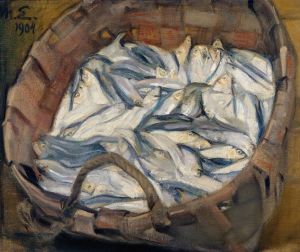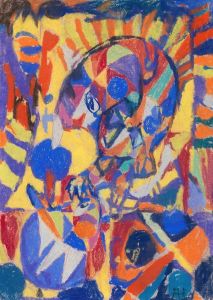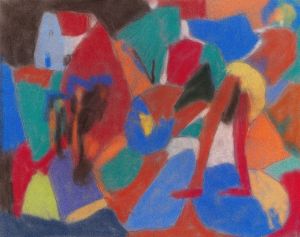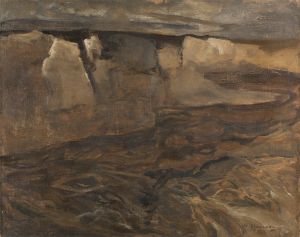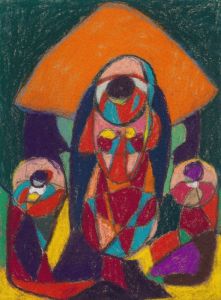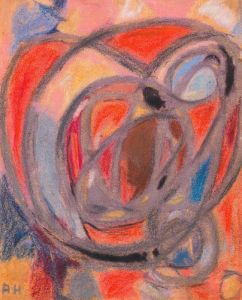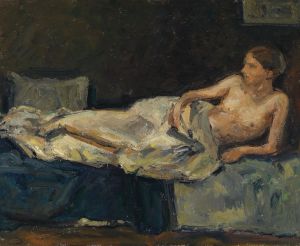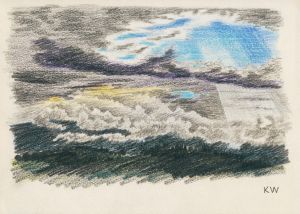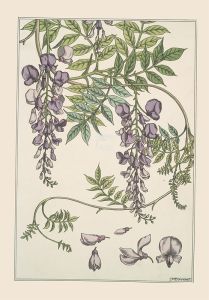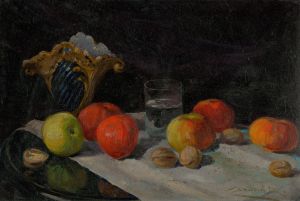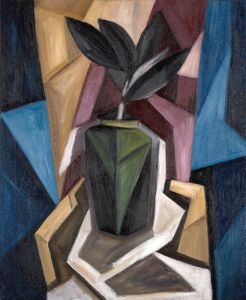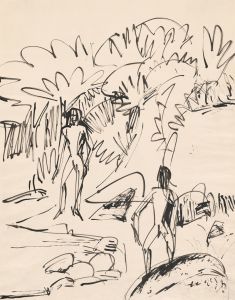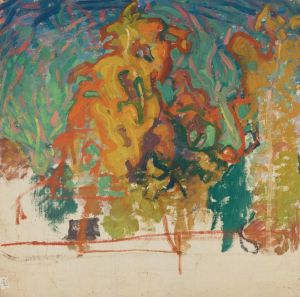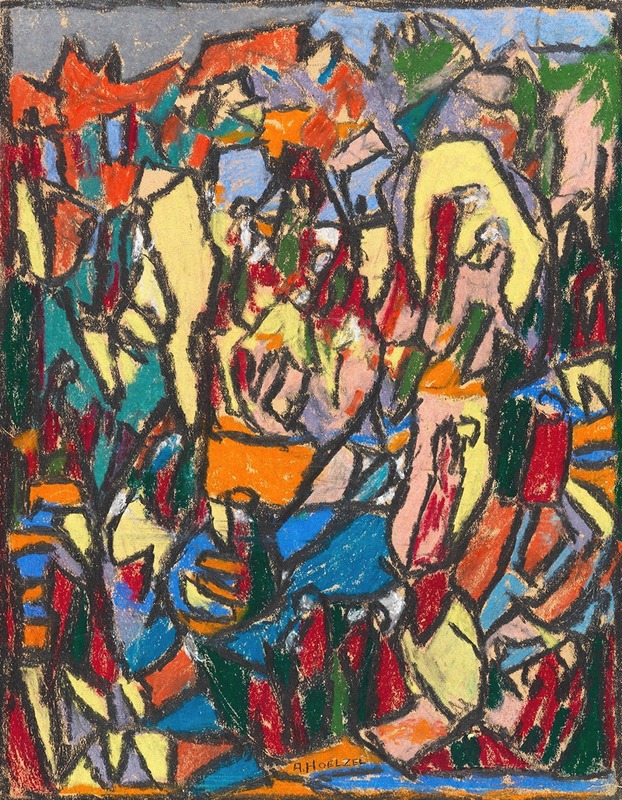
Belebte Landschaft
A hand-painted replica of Adolf Hölzel’s masterpiece Belebte Landschaft, meticulously crafted by professional artists to capture the true essence of the original. Each piece is created with museum-quality canvas and rare mineral pigments, carefully painted by experienced artists with delicate brushstrokes and rich, layered colors to perfectly recreate the texture of the original artwork. Unlike machine-printed reproductions, this hand-painted version brings the painting to life, infused with the artist’s emotions and skill in every stroke. Whether for personal collection or home decoration, it instantly elevates the artistic atmosphere of any space.
Adolf Hölzel was a prominent German painter and art theorist, known for his contributions to the development of modern art in the late 19th and early 20th centuries. One of his notable works is "Belebte Landschaft," which translates to "Animated Landscape." This painting exemplifies Hölzel's innovative approach to color and form, reflecting his significant role in the transition from traditional to modern art.
Adolf Hölzel was born on May 13, 1853, in Olomouc, Moravia, which is now part of the Czech Republic. He studied at the Academy of Fine Arts in Vienna and later at the Academy of Fine Arts in Munich. Hölzel's early work was influenced by Impressionism, but he gradually moved towards abstraction, becoming a pioneer in the use of color theory and compositional techniques that would later influence the Expressionist and Abstract movements.
"Belebte Landschaft" is a testament to Hölzel's exploration of color and form. While specific details about the painting's creation date and current location are not widely documented, it is known that Hölzel's work during this period was characterized by a vibrant use of color and a dynamic composition. He often sought to capture the essence of a scene rather than its realistic depiction, focusing on the emotional and spiritual impact of color and form.
Hölzel was deeply interested in the spiritual and symbolic potential of art. He believed that art should transcend mere representation and evoke deeper emotional responses. This philosophy is evident in "Belebte Landschaft," where the landscape is not just a depiction of nature but an exploration of the interplay between color, light, and form. The painting likely features a harmonious blend of colors and abstract shapes, inviting viewers to engage with the work on a more intuitive level.
In addition to his painting, Hölzel was a respected teacher and theorist. He taught at the Stuttgart Academy of Fine Arts, where he influenced a generation of artists, including notable figures like Oskar Schlemmer and Johannes Itten. His teachings emphasized the importance of color theory and the expressive potential of abstract forms, laying the groundwork for future developments in modern art.
Hölzel's impact on the art world extends beyond his own work. His theories on color and composition were instrumental in the development of the Bauhaus movement and other modernist trends. His emphasis on the spiritual dimension of art also resonated with the Expressionists, who sought to convey emotional and psychological depth through their work.
"Belebte Landschaft" is a reflection of Hölzel's artistic philosophy and his commitment to pushing the boundaries of traditional art. While specific details about the painting may be scarce, its significance lies in its embodiment of Hölzel's innovative approach to art. Through his use of color and abstraction, Hölzel challenged conventional notions of representation and paved the way for future generations of artists to explore new artistic possibilities.
In summary, Adolf Hölzel's "Belebte Landschaft" is an important work that captures the essence of his contributions to modern art. Through his exploration of color and form, Hölzel not only created visually striking compositions but also inspired a shift towards abstraction and expressionism in the art world. His legacy continues to influence artists and art movements to this day.





